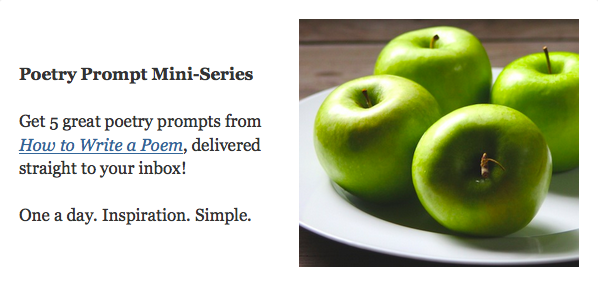 Remembered as the inventor of the cinquain, Adelaide Crapsey’s poems were published posthumously in the twenties and thirties. During that time she was praised by anthologist Louis Untermeyer as “an unconscious Imagist,” then by literary critic Yvor Winters as “a minor poet of great distinction.” He believed her poems remained “in their way honest and acutely perceptive.” Most anthologies published after 1950 however, even those of women poets, neglect to include her.
Remembered as the inventor of the cinquain, Adelaide Crapsey’s poems were published posthumously in the twenties and thirties. During that time she was praised by anthologist Louis Untermeyer as “an unconscious Imagist,” then by literary critic Yvor Winters as “a minor poet of great distinction.” He believed her poems remained “in their way honest and acutely perceptive.” Most anthologies published after 1950 however, even those of women poets, neglect to include her.
Adelaide read English and French translations of Japanese tanka and haiku and wrote extensive notes on Anthologie de la Littérature Japonaise by Michel Revon. Michel’s exegesis of the poetic forms and the cultural background and significance sharpened her interest to produce a new form of poetry.
The cinquain resembles the haiku in its juxtaposition of images. Although short, “it must contain two elements, usually divided by a break marked by what the Japanese call a ‘cutting word’ (kireji). One of these elements can be a broad condition such as stillness in a landscape, the end of a season, and the other element may be a momentary perception. For the haiku to be effective, it must leap with a spark of the sudden perception of a truth, which then leads to an awakening or enlightenment.
Some of Crapsey’s finest cinquains involve this same idea of superposition or “one idea set on top of another.” Her poem “Amaze” incorporates a superposition of ideas or a crisscrossing between the ephemeral and the eternal, the still and the flowing.
I know
Not these my hands
And yet I think there was
A woman like me once had hands
Like these.
Try It: Superposition in a Cinquain
Remember: The poem is five lines long. The first line is 2 syllables, the second has 4, there are 6 in the third, 8 in the fourth, and 2 syllables again in the last line.
Apply the idea of the “superposition” (or “one idea set on top of another”) into your own cinquain poem. Think about the two elements used in haiku and shape it into the theme of your poem. Add your spark of truth.
Click to get FREE 5-Prompt Mini-Series
Featured Poem
Thanks to everyone who participated in last week’s poetry prompt. Here is a poem from Christina we enjoyed:
The Cold Remedy
Drink tea.
Now diffuse oils.
Close eyes. Nap. Let it be.
Rest? Salvation. Heal the unseen.
Cease toils.
Photo by Georgie Pauwels. Creative Commons via Flickr.
Browse more writing prompts
Browse poetry teaching resources

“How to Write a Poem is a classroom must-have.”
—Callie Feyen, English Teacher, Maryland
- Poetry Prompt: Misunderstood Lion - March 19, 2018
- Animate: Lions & Lambs Poetry Prompt - March 12, 2018
- Poetry Prompt: Behind the Velvet Rope - February 26, 2018

Shannon Mayhew says
Awake
though dreams linger.
A letter from heaven
I couldn’t read; the writing looked
like hers.
Katie says
Shannon,
Intriguing and beautiful.
Thank you for sharing.
Shannon says
Thank you, Katie! I am new to Tweetspeak Poetry, and am excited to have this opportunity to play with words among this warm and talented community!
The poem is about a friend who passed away earlier this year. Hours before I sat down to check out this week’s prompt, I dreamed she sent me a letter. Of course I couldn’t read what it said, but I knew it was from her. I’m grateful to have had this chance to give form to the experience, which was unsettling but also truly sweet.
Katie says
So glad you shared this (for your sake and ours), Shannon.
& Welcome to the TSP community!
Shannon says
Ah, me too, Katie. Thank you for making me feel so welcome. 🙂
Sharon A Gibbs says
Shannon, Welcome! Hope to see more from you.
What a beautiful poem.
Shannon says
Thank you, Sharon!!
Heather Eure says
Thanks for sharing with us, Shannon! This is the kind of tender poem that catches us in the throat a little.
Rick Maxson says
That he
loved the orchid,
and sought her in his dreams,
he also loved the rose’s thorns
it seems.
Heather Eure says
Ah, a twist! Good stuff, Rick. 🙂
Rick Maxson says
lovely
looks like ugly
sometimes, but look again,
the burl waits for the carpenter’s
skilled hands
Katie says
Rick,
As usual your poem had me reaching for the dictionary to find a definition – this time of “burl”.
A large
rounded outgrowth
on a tree trunk or branch;
The strongly marked wood from such an
outgrowth.
Reading your poetry has expanded my vocabulary:)
Thanks for sharing.
Heather Eure says
I do love the gnarly look of a burled wood chest of drawers. I imagine it’s a challenge to work through the knots, though.
Sharon A Gibbs says
So many beautiful creations are crafted from burls. I have one of a carved hummingbird perched on a branch.
Katie says
Can we
all plainly see
that Katie is catching
up on Tweetspeak Poetry Prompts
this week?;)
Heather Eure says
🙂
Prasanta says
Winter
will find its rest
once morning arrives, and
the sun makes us forget what aches.
Begin….
Heather Eure says
Oooh, I like this, Prasanta!
Sharon A Gibbs says
Prasanta, How captivating. I miss reading your beautiful poetry (as I did in the TSP workshop).
Rick Maxson says
At war,
and if you won
all the land, all the wealth,
all choices were yours, your God ruled,
what then?
Katie says
I want to share some cinquains I wrote in order to process/grieve/lament the calamity in LV:
carnage
out of the blue
such senseless suffering
so many lives lost, gone too soon
bloodshed
&
shooting
slaughter yet again in our land
fear, doubt, hurt, death, puzzled
will we ever
know why
&
bloody
and extensive
assault on the living
massacre raining down, killing
our hope
&
deadly
swift violence and destruction
stealing life, shattering
many people
for what
L.L. Barkat says
It’s interesting how different forms automatically communicate a different sense of a thing. Each form has a fabric of its own. The cinquain seems to have a focusing quality, even a terseness that works for this.
For me, grief has a feeling of suspension, all the while moving mercilessly forward. So the cinquain wasn’t going to work for my own response. But? It would be interesting for a single person to cycle through some of the major forms, as a way to get at various aspects of the tragedy, and reveal various aspects of personal and communal grief.
October
When the rain came, they were singing
the beat was steady—rat tat tat,
the drums shot through
the air so thin
it could not bend
the certain slant of light
that called them back
when the rain came. Falling. Falling. Singing.
Katie says
L.L.,
Thank you for this thoughtful comment and your poem.
Gratefully,
Katie